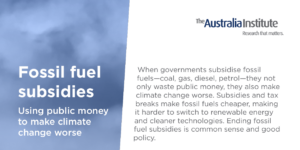Mining industry lobby group the NSW Minerals Council this week released yet another report on mining’s importance to the NSW and regional economies. Not surprisingly, the report contains lots of big numbers.
But this report, like many before it, is a case of ‘‘what’s true isn’t surprising and what’s surprising isn’t true’’.
Let’s start with what’s true but isn’t surprising.
The report claims nearly 13,000 people work in the mining industry in the Hunter. This supports very similar estimates in the 2011 census.
While 13,000 may seem like a lot, the Hunter has a workforce of over 260,000 people. Mining employment makes up only 5per cent of jobs in the Hunter, and considerably less across NSW.
In other words, 95per cent of Hunter Valley workers do not work in the mining industry.
The mining industry likes to give the impression that it is an important employer by focusing on ‘‘indirect’’ or ‘‘flow-on’’ employment. The report’s figures for indirect employment are certainly surprising, claiming 155,519 jobs across NSW. Unfortunately this figure just isn’t true.
To calculate this number the Minerals Council have used a type of economic model called input-output modelling. This modelling has been described as ‘‘biased’’ by the Australian Bureau of Statistics, ‘‘abused’’ by the Productivity Commission and ‘‘deficient’’ by the NSW Land and Environment Court.
These bodies were particularly unimpressed by the modelling assumption that there is a ‘‘ghost workforce’’ of skilled workers in NSW. This assumption was a major part of the Land and Environment Court’s rejection of the Warkworth Extension Proposal.
A later legal appeal against Yancoal’s Ashton mine also focused on indirect jobs. With input-output models out of favour in the Land and Environment Court, Yancoal turned to a more sophisticated model.
While their input-output model had estimated the project would create over 500 indirect jobs, under the new model Yancoal’s own economist conceded the project would create just two more jobs than the mine would employ directly. He told the judge the Ashton project ‘‘is not about jobs’’.
The thing to remember about ‘‘indirect’’ jobs is that all industries help to create them. Demand for more teachers or doctors in the Hunter is driven by growth in population and a range of industries, not mining alone. If all industries calculated their indirect jobs the same way as the mining industry does, Australia would need a workforce three times larger than it actually has.
Other figures from the report show the Hunter produces a lot of coal, approximately $13billion worth in 2012-13, representing around 36per cent of the region’s economic output. Hardly surprising considering Australia is the second largest exporter of coal and Newcastle is the world’s largest export coal port.
What the report doesn’t discuss, however, is that the Hunter coal industry is almost entirely foreign owned, meaning that not much of this money remains in Australia.
Because of this, economic output is not a good indicator of the benefits for NSW. The main benefits for NSW are employment and royalties, the money miners pay to buy the minerals from the people of NSW. But the report doesn’t discuss royalties at all.
The NSW mining industry pays around $1.5billion in royalties per year. While this may seem a large sum of money, in the context of the state government’s budget it is uncomfortably small – around 2per cent of total revenue. The vast bulk of state government revenue comes from workers and businesses in other industries like nurses, teachers, tradies, retailers and manufacturers.
Another omission from the Minerals Council’s report is the economic costs of pollution that comes from mining.
The industry’s impacts on health, water and the climate come with economic costs communities are forced to bear.
Entire branches of economics are devoted to estimating these values, but none of them were in this report.
There is no doubt that the NSW mining industry digs up a lot of coal and makes a lot of money. That is what enables the industry to commission economic reports like the one it released this week. It uses these reports to inflate perceptions of its importance and increase its political power. It needs this power to push through controversial projects like Warkworth and the T4 coal port expansion.
Both the Hunter and NSW economies are modern and diversified. The economic well-being of these areas comes from contributions of many industries. Remember this the next time a lobby group commissions a ‘‘surprising’’ economic report.
Rod Campbell is an economist at The Australia Institute, a Canberra-based think tank, www.tai.org.au
Related documents
Between the Lines Newsletter
The biggest stories and the best analysis from the team at the Australia Institute, delivered to your inbox every fortnight.
You might also like
Fossil fuel subsidies
When governments subsidise fossil fuels—coal, gas, diesel, petrol—they not only waste public money, they also make climate change worse. Subsidies and tax breaks make fossil fuels cheaper, making it harder to switch to renewable energy and cleaner technologies. Ending fossil fuel subsidies is common sense and good policy.
Why a fossil fuel-free COP could put Australia’s bid over the edge
When the medical world hosts a conference on quitting smoking, they don’t invite Phillip Morris, or British American Tobacco along to help “be part of the solution”.
Can you imagine any other climate research group asking for less money?
Getting coal for Christmas is supposed to be a bad thing. But for Australia’s coal mines, all their Christmases seem to have come at once!

